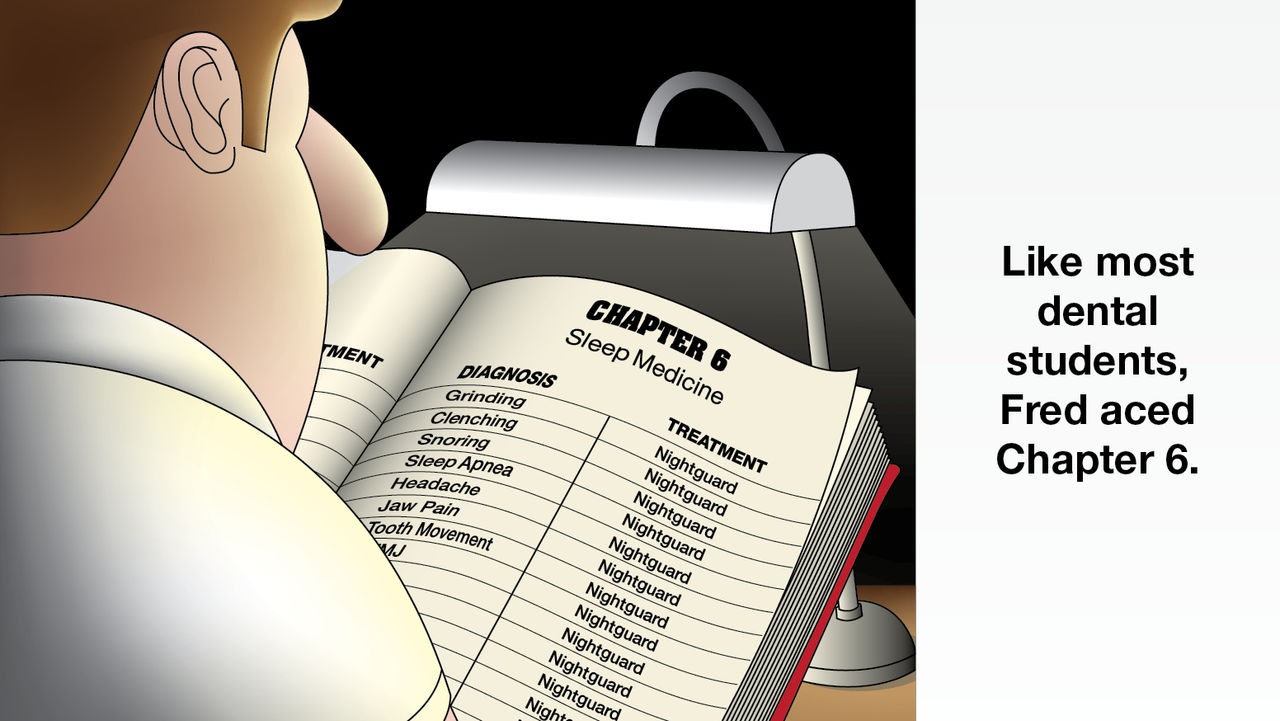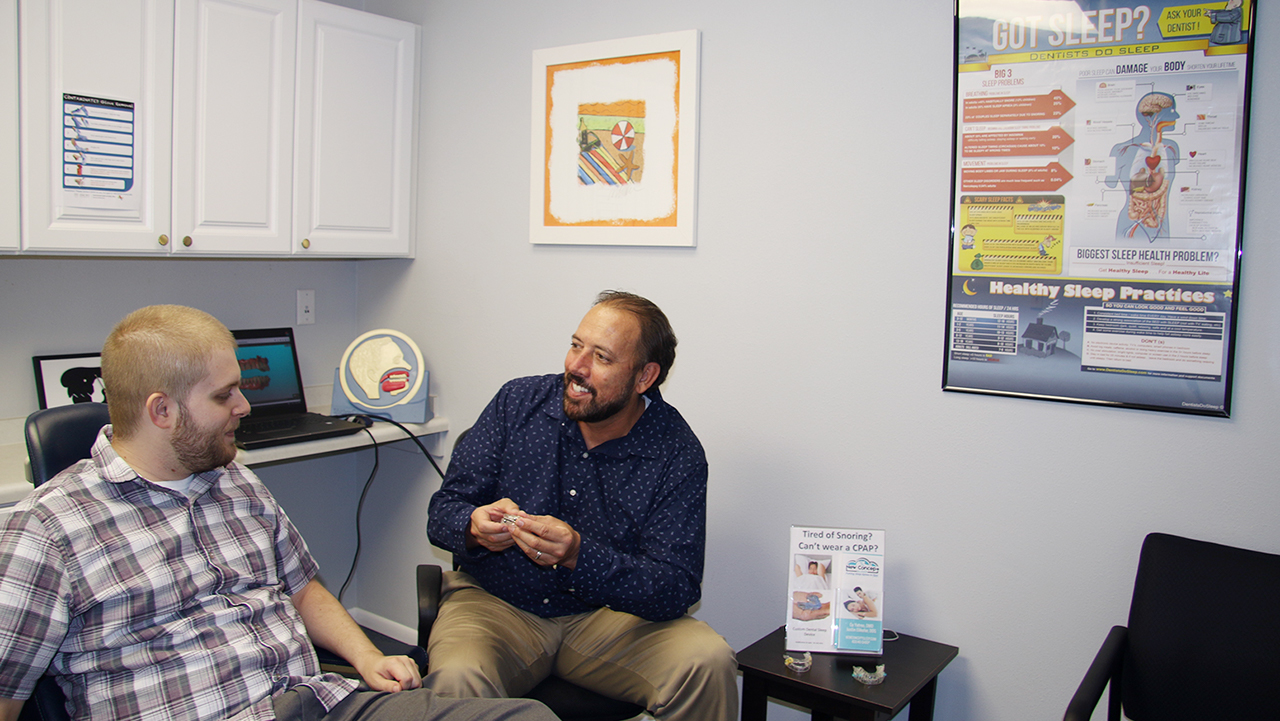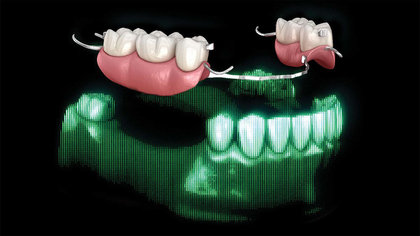An estimated 16.5% of people experience parafunctional jaw activity that results in severe tooth wear due to clenching, grinding and tapping during sleep. A patient-specific nightguard is a device that is formed to the upper or lower dentition to protect teeth from wear. It is very common for a dentist to prescribe a nightguard to protect dental restorations and to treat sleeping conditions and disorders, including the following:
- Bruxism — Clenching, grinding and tapping during sleep that can result in worn dentition, jaw pain and tension-type headaches. When wearing a nightguard like the NTI-tss Plus® or the NTI OmniSplint®, the patient’s teeth are separated during sleep so that the teeth are protected, and clenching force is reduced. Headaches are much less severe or do not occur.
- Snoring — While technically not a medical condition, snoring is due to a partially collapsed airway and can be very disruptive to sleep quality. Nightguards for snoring position the lower jaw forward to pull the tongue forward and support the tissues of the upper airway.
- Sleep apnea — A potentially serious sleep disorder where the tongue falls back into the airway, causing the tissues of the throat to collapse. The obstruction of airflow can be severe, and comorbid conditions may include diabetes, heart disease, stroke and, in some cases, early death. Sleep apnea is a medical condition that requires diagnosis and management by a physician.
It is relatively uncommon for neurologists to provide a dental referral for patients who suffer from headaches related to clenching and grinding due to parafunctional jaw activity. Still, the NTI-tss Plus and NTI OmniSplint have begun to gain traction for the treatment of chronic headaches and clenching. Chronic headaches can be identified with a simple questionnaire in the dental office.
Mandibular advancement devices (MAD) for the treatment of snoring and sleep apnea are much more mainstream. According to a recent CDC report, nearly 65% of adults in the U.S. see their dentist at least once a year, putting the dental office in the ideal position for timely intervention. However, the traditional model of providing this care is expensive and time consuming, and dental teams often report that it does not fit well within a dental practice. These practices often have the greatest challenge with treatment acceptance, even though patients in need of care are typically found in the existing patient population (i.e., patients who are already under care and already trust the dentist to provide the treatments they need).
Dental insurers report that only 50% of adults between the ages of 18 and 64 have coverage. It is very common for preventive care, including cleanings and annual exams, to be covered procedures, but not all dental insurers cover nightguards. It is best to plan on the patient paying out of pocket for preventive care like nightguards to protect against tooth wear.








